Jiyang Yu
SE-ORNet: Self-Ensembling Orientation-aware Network for Unsupervised Point Cloud Shape Correspondence
Apr 10, 2023



Abstract:Unsupervised point cloud shape correspondence aims to obtain dense point-to-point correspondences between point clouds without manually annotated pairs. However, humans and some animals have bilateral symmetry and various orientations, which lead to severe mispredictions of symmetrical parts. Besides, point cloud noise disrupts consistent representations for point cloud and thus degrades the shape correspondence accuracy. To address the above issues, we propose a Self-Ensembling ORientation-aware Network termed SE-ORNet. The key of our approach is to exploit an orientation estimation module with a domain adaptive discriminator to align the orientations of point cloud pairs, which significantly alleviates the mispredictions of symmetrical parts. Additionally, we design a selfensembling framework for unsupervised point cloud shape correspondence. In this framework, the disturbances of point cloud noise are overcome by perturbing the inputs of the student and teacher networks with different data augmentations and constraining the consistency of predictions. Extensive experiments on both human and animal datasets show that our SE-ORNet can surpass state-of-the-art unsupervised point cloud shape correspondence methods.
Video2StyleGAN: Encoding Video in Latent Space for Manipulation
Jun 27, 2022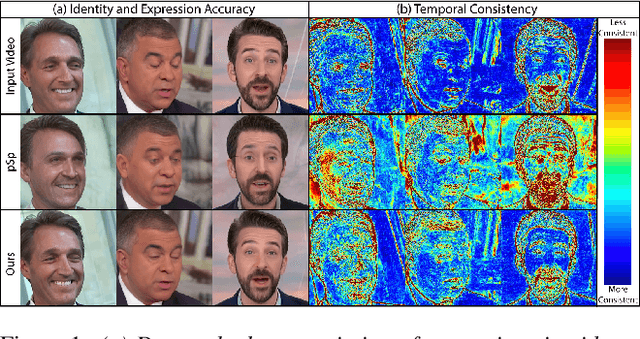


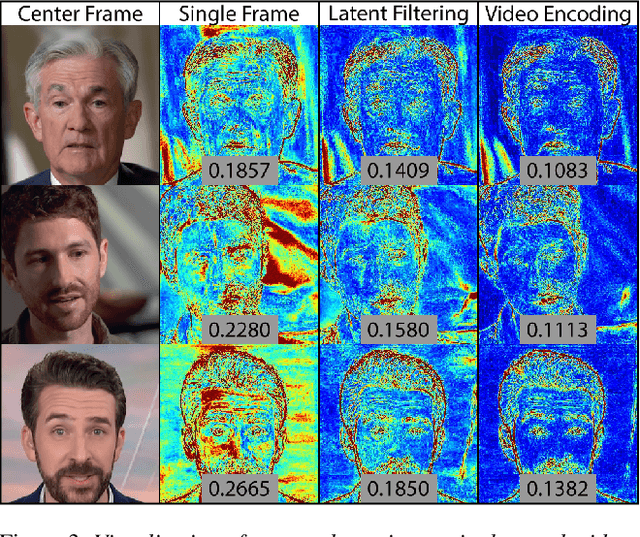
Abstract:Many recent works have been proposed for face image editing by leveraging the latent space of pretrained GANs. However, few attempts have been made to directly apply them to videos, because 1) they do not guarantee temporal consistency, 2) their application is limited by their processing speed on videos, and 3) they cannot accurately encode details of face motion and expression. To this end, we propose a novel network to encode face videos into the latent space of StyleGAN for semantic face video manipulation. Based on the vision transformer, our network reuses the high-resolution portion of the latent vector to enforce temporal consistency. To capture subtle face motions and expressions, we design novel losses that involve sparse facial landmarks and dense 3D face mesh. We have thoroughly evaluated our approach and successfully demonstrated its application to various face video manipulations. Particularly, we propose a novel network for pose/expression control in a 3D coordinate system. Both qualitative and quantitative results have shown that our approach can significantly outperform existing single image methods, while achieving real-time (66 fps) speed.
Memory-Augmented Non-Local Attention for Video Super-Resolution
Aug 25, 2021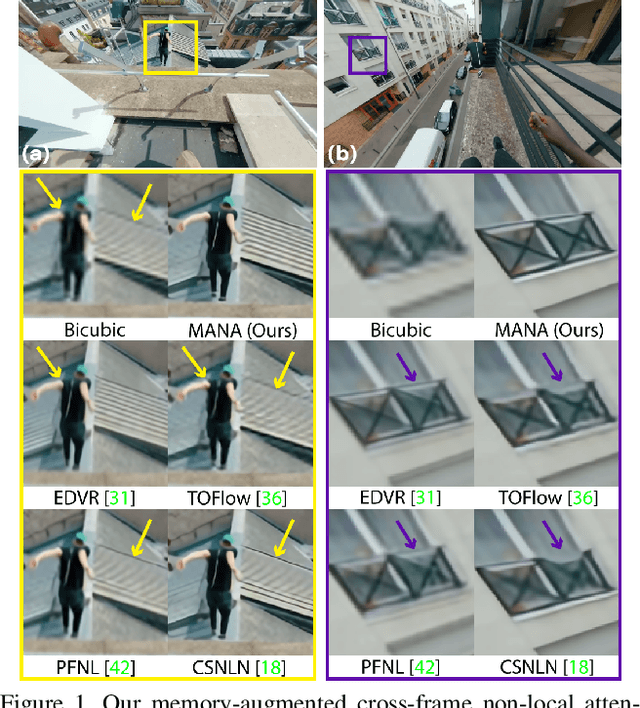
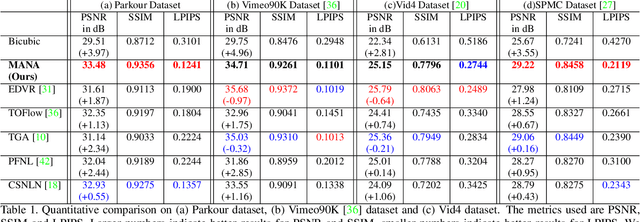
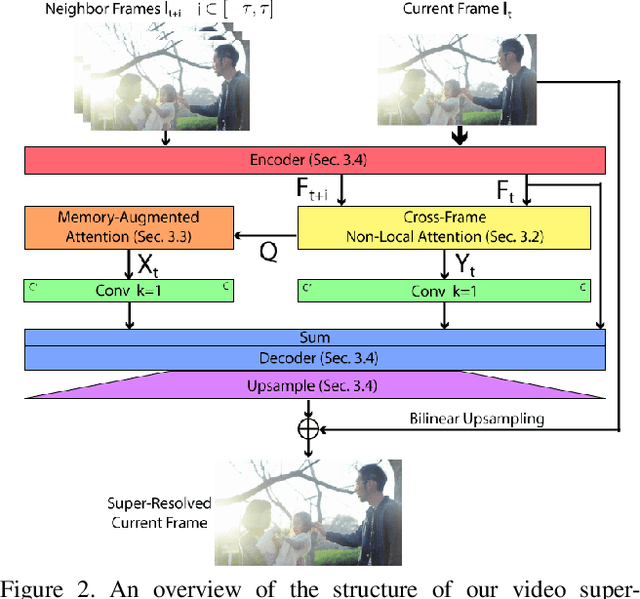

Abstract:In this paper, we propose a novel video super-resolution method that aims at generating high-fidelity high-resolution (HR) videos from low-resolution (LR) ones. Previous methods predominantly leverage temporal neighbor frames to assist the super-resolution of the current frame. Those methods achieve limited performance as they suffer from the challenge in spatial frame alignment and the lack of useful information from similar LR neighbor frames. In contrast, we devise a cross-frame non-local attention mechanism that allows video super-resolution without frame alignment, leading to be more robust to large motions in the video. In addition, to acquire the information beyond neighbor frames, we design a novel memory-augmented attention module to memorize general video details during the super-resolution training. Experimental results indicate that our method can achieve superior performance on large motion videos comparing to the state-of-the-art methods without aligning frames. Our source code will be released.
Real-Time Selfie Video Stabilization
Sep 04, 2020
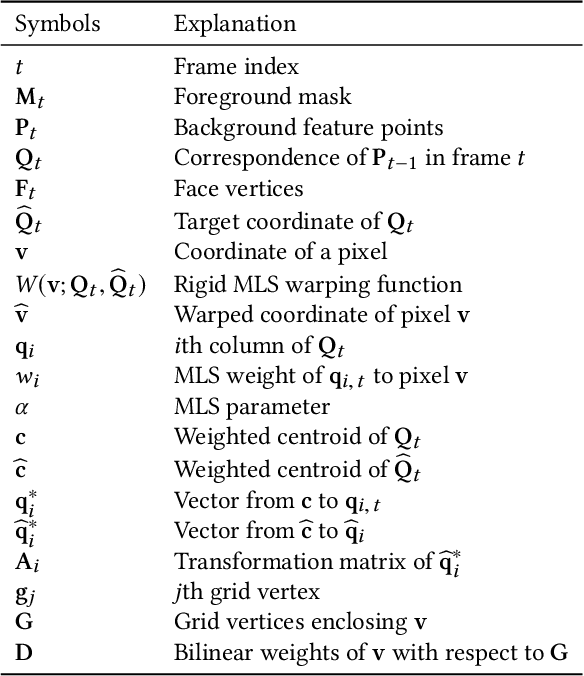
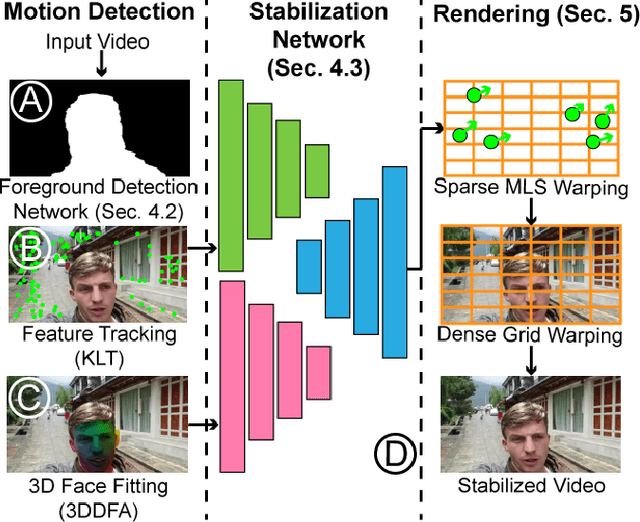
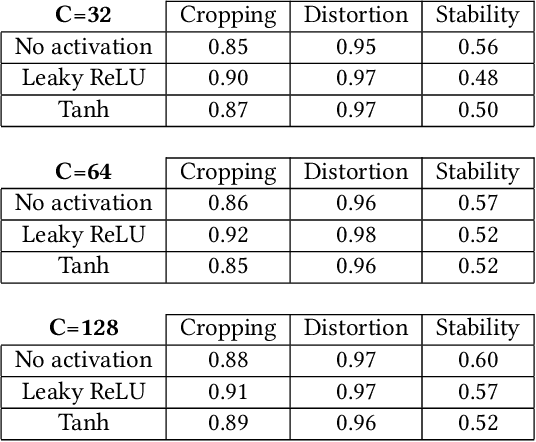
Abstract:We propose a novel real-time selfie video stabilization method. Our method is completely automatic and runs at 26 fps. We use a 1D linear convolutional network to directly infer the rigid moving least squares warping which implicitly balances between the global rigidity and local flexibility. Our network structure is specifically designed to stabilize the background and foreground at the same time, while providing optional control of stabilization focus (relative importance of foreground vs. background) to the users. To train our network, we collect a selfie video dataset with 1005 videos, which is significantly larger than previous selfie video datasets. We also propose a grid approximation method to the rigid moving least squares warping that enables the real-time frame warping. Our method is fully automatic and produces visually and quantitatively better results than previous real-time general video stabilization methods. Compared to previous offline selfie video methods, our approach produces comparable quality with a speed improvement of orders of magnitude.
 Add to Chrome
Add to Chrome Add to Firefox
Add to Firefox Add to Edge
Add to Edge